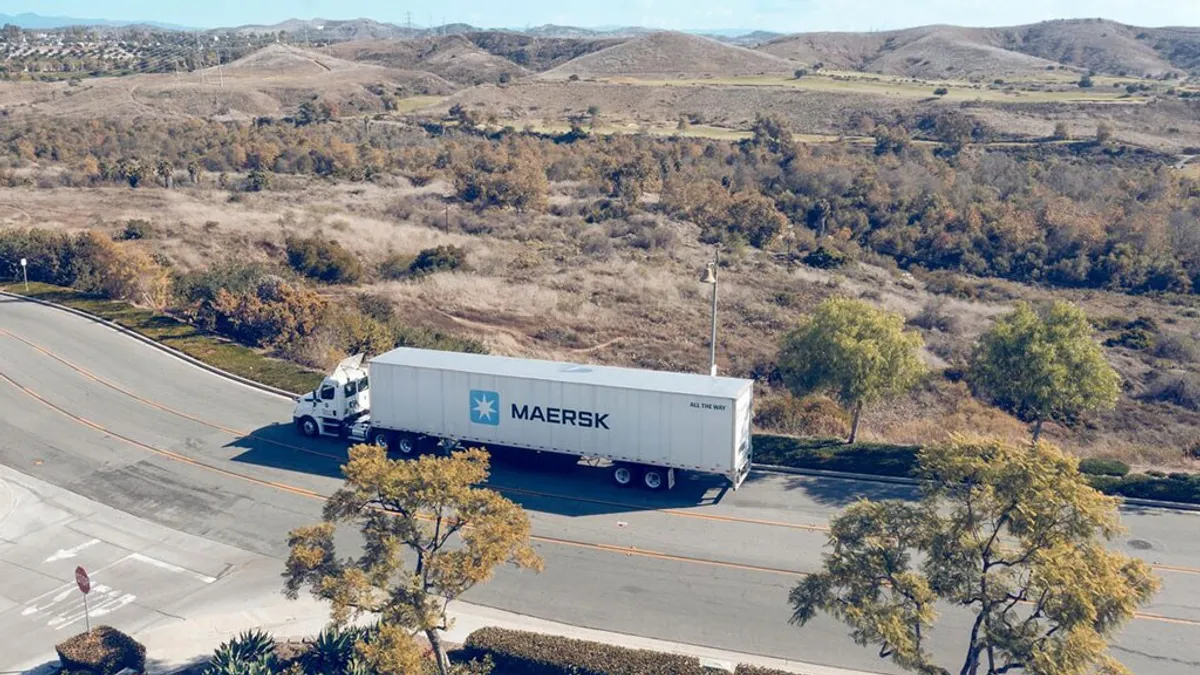Dive Brief:
- A.P. Moller — Maersk trimmed its North America Ground Freight business in Q2 to position the trucking and warehousing segment for improved profitability, according to a Q2 earnings call.
- The company increased asset utilization through site consolidation and offloading unneeded capacity. “We've worked hard since to firm up procedures [and] stabilize operations,” Maersk Regional President of North America Charles van der Steene said in an interview with Supply Chain Dive.
- The company faced material challenges in Q1 due to “steep” growth in a short time frame that overwhelmed its network, van der Steene said. Maersk is also working to rightsize its warehouse footprint and drive increased utilization as part of its efforts.
Dive Insight:
Maersk aims to address Ground Freight inefficiencies from Q1 and grow the services, which include warehousing, truckload, LTL and cross-border trucking offerings.
“Truckload, LTL, parcel — which is most of the domestic transportation — it's not very healthy. The demand is down, which means less freight to move for truckload guys. Even the parcel people are not seeing growth in the volumes of their customers,” Satish Jindel, principal consultant at SJ Consulting Group, told Supply Chain Dive in an interview.
Growth across all products in its “Fulfilled By Maersk” segment saw its revenue increase of 13% to $1.4 billion with Ground Freight and Last Mile being main drivers, according to a Q2 investor presentation.
“They [Maersk] have to pallet their freight, which is not really LTL, which is more the bulky last-mile,” Jindel said. “They may have gained some business from a competitor. The overall market is still fairly plain vanilla,” he added.
The freight market has been down for over a year, Jindel said, with LTL probably faring the best from truckload and parcel with low single digit price increase. “Truckload guys are negative. Parcel guys are even less — 1 or 2% if they're lucky,” he said.
Ground Freight from Maersk builds on the carrier’s focus in becoming a leading provider of end-to-end logistics. Its efforts include acquisitions beyond ocean services for the past five years, van der Steene told Supply Chain Dive.
One key strategy in Maersk’s end-to-end vision is how it manages e-commerce, which continues to be a core focal area for its customers, he said.
Throughout its network of assets, including ocean, air and landside operations, the company has been able to provide customers with a “true e-commerce solution” from Asia into the U.S., from Europe into the U.S., or within the U.S., which launched at the beginning of this year, van der Steene said.
“We are now, at already today, 500,000 parcels that move through that solution on a daily basis,” van der Steene said. “The true example of when we speak about end-to-end, we're now talking about connecting a manufacturer in Asia, that could be South Asia, it could be China, it could be India, into the U.S. market, all the way to your couch, my couch, using Maersk as a unified provider of that integrated service.”













